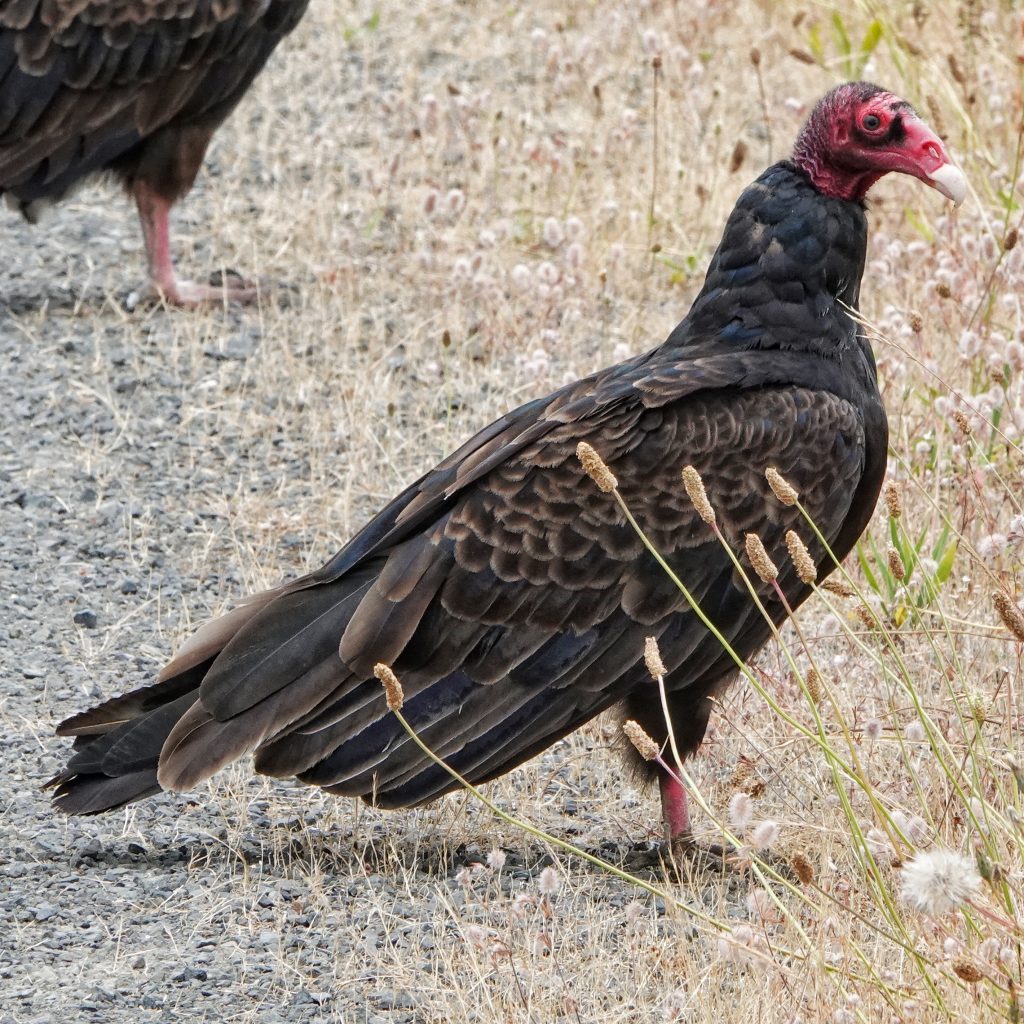
I really wasn’t sure I’d ever end up doing a Turkey Vulture (TV in birding shorthand) profile, and not because I seldom see them. It’s because I’ve taken hundreds of photos of TVs in flight, and none of them have turned out well, and I rarely find them perched within camera range. But all of that changed when Morgan and I visited the Julia Butler Hansen NWR, outside Cathlamet, Washington (although part of the refuge encompasses a bit of northern Oregon), last Saturday where, possibly because it was an unseasonably cool day, we found a committee of Turkey Vultures standing together on one of the dike trails, as well as several perched in nearby trees.
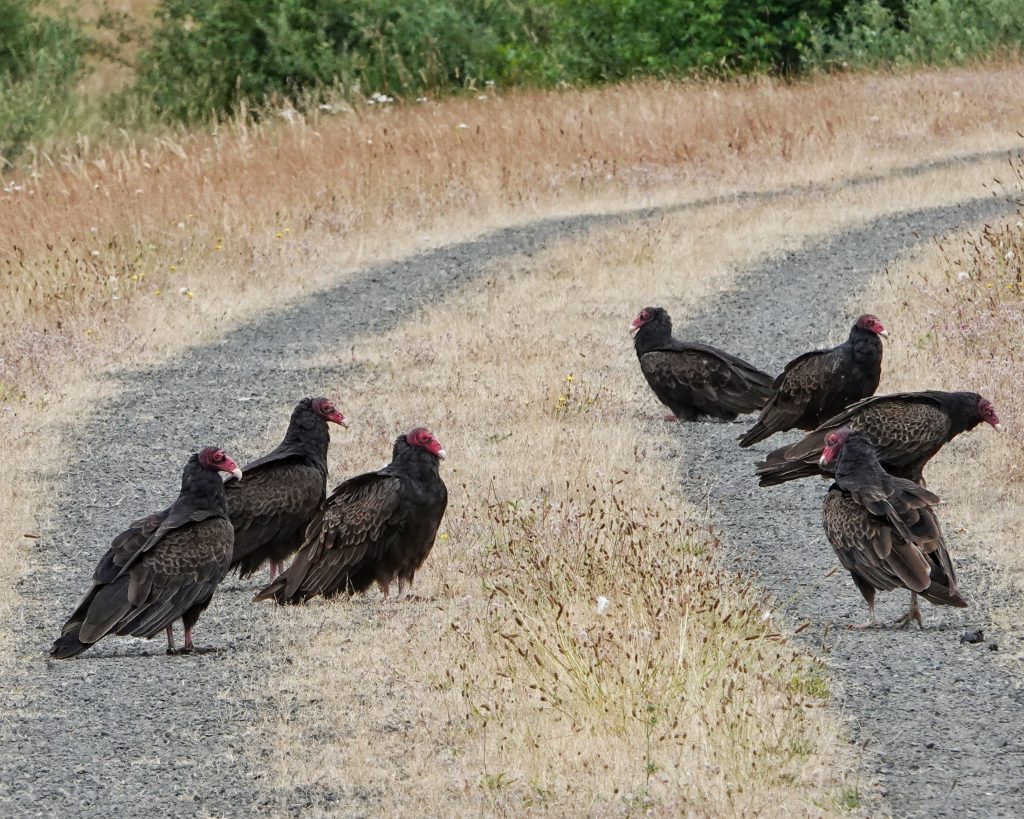
I first noticed the ones on the trail when we were several hundred yards away, and I took a few photos. As we got closer I took more photos every 20 yards or so, because I was sure they would soon fly away. But it wasn’t until we were less than 100’ away that they spooked, and then they only moved another 10 yards further. Morgan and I had our eyes and noses searching for a quantity of carrion that might have kept them from wanting to leave, but we never did find any. Eventually we got within 50’ of the closest ones (there were 7 in the committee) and I was able to snap photos to my hearts content. Finally, even though we were relatively still and the birds seemed very calm, they began departing in ones and twos. It was a very cool encounter with such interesting birds.
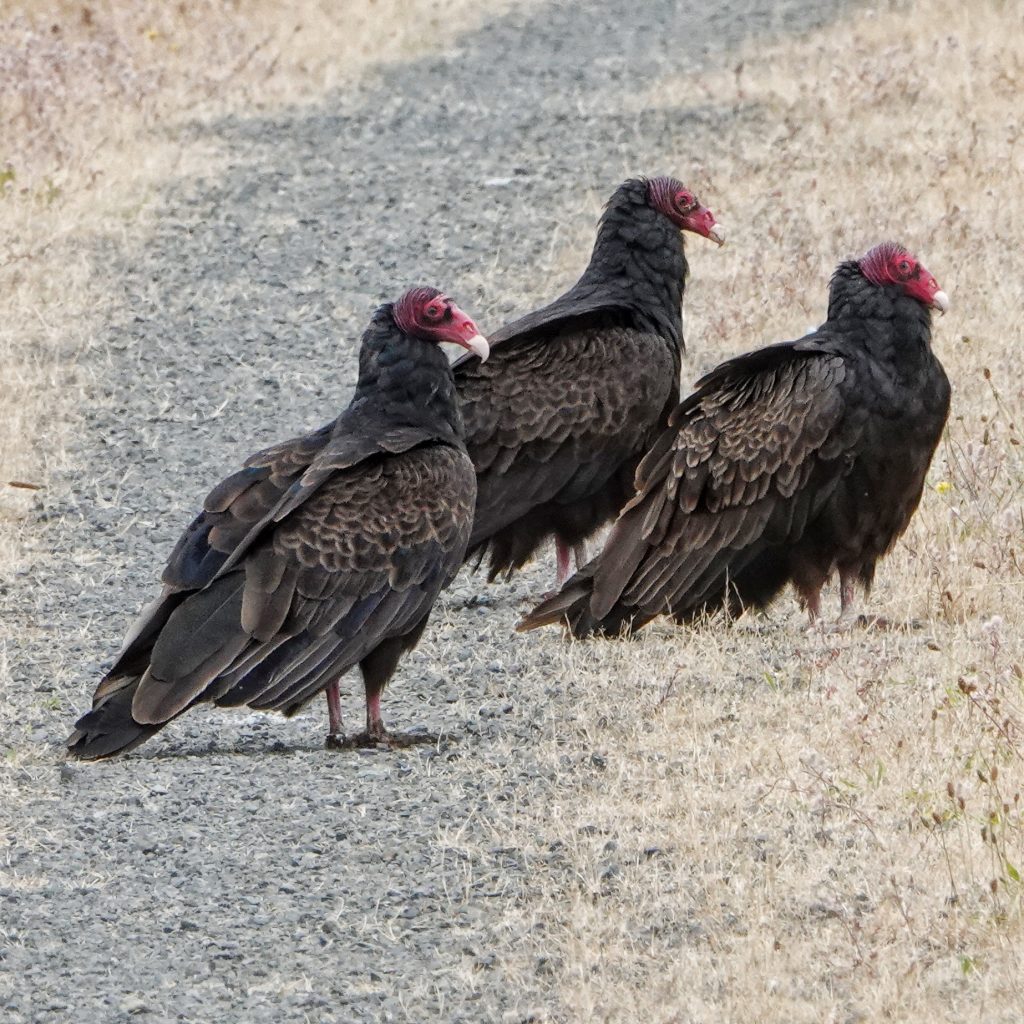
Vultures in general get a bad rap because of their association with death, but they provide an invaluable service by consuming untold numbers of carcasses. And really, if looked at without preconceptions, they are rather a handsome bird, in a utilitarian and prehistoric (vultures have been around for at least 50 million years) way, with their dark mottled plumage, ivory beak, and contrasting, featherless red head (which cuts down on the bacteria that can adhere to it when they plunge it into a carcass, and leaves the bacteria that do cling on exposed to UV rays afterwards). I think it was Edward Abbey that said something like ‘In my next life I want to be a vulture’, but I immediately identified with it. It seems like a good life, without the stress and pressure of hunting, just floating around in the sky, awaiting the inevitability of a death.
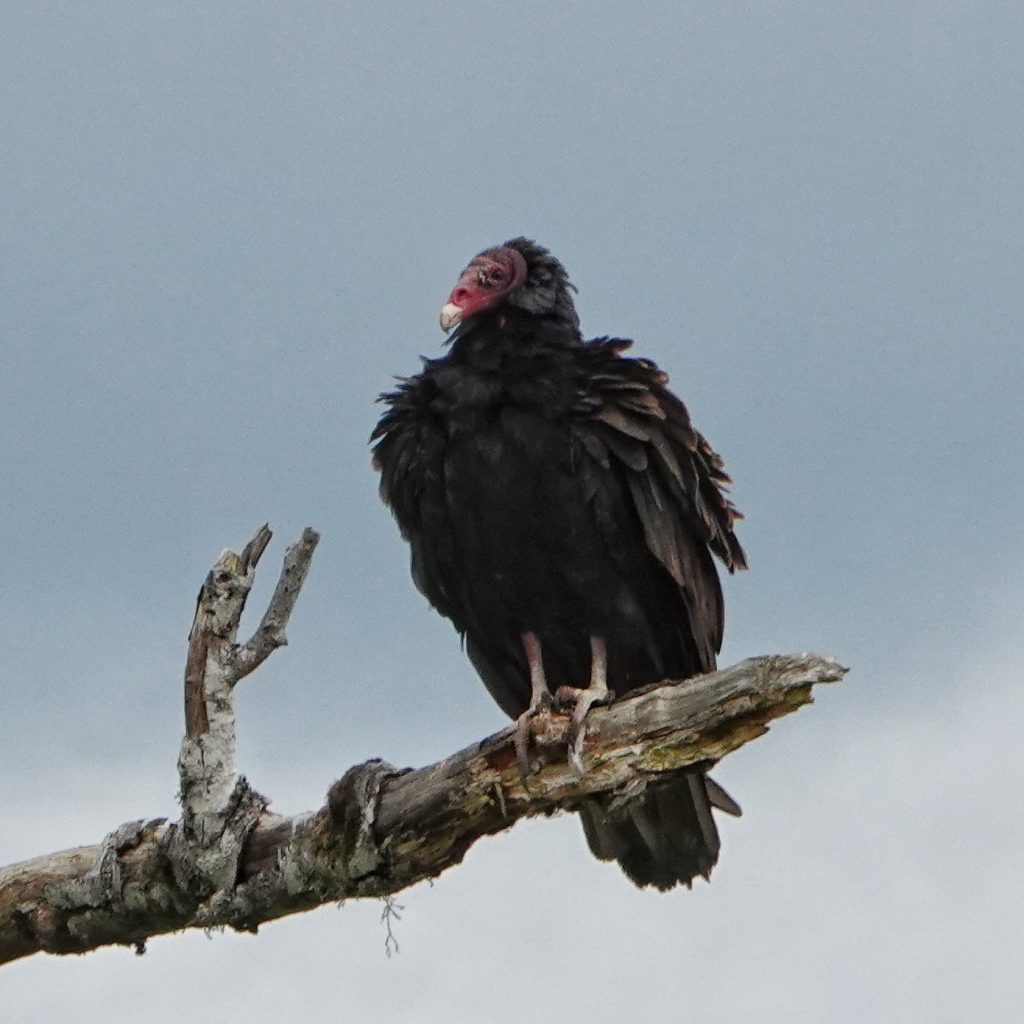
What we call a stench smells like dinner to them, free of the pejorative associations humans place on such smells. Speaking of smells, Turkey Vultures have one of the best olfactory sensing devices in the avian world, with huge nostrils and a greatly enlarged olfactory lobe in the brain, and they are one of the few vultures to detect their food using that sense. Since they actually prefer freshly dead carrion, and in fact avoid carcasses in advanced states of putrefaction, they are able to detect very small amounts (a few parts per trillion) of the gases produced right at the start of the decomposing of flesh. One of those gases is mercaptan, and as far back as 1938 Union Oil was injecting mercaptan into their pipeline, and subsequently monitoring TV activity above their pipelines to discover leaks. They also use their sight to detect carcasses, as well as to follow other vultures to the feast.
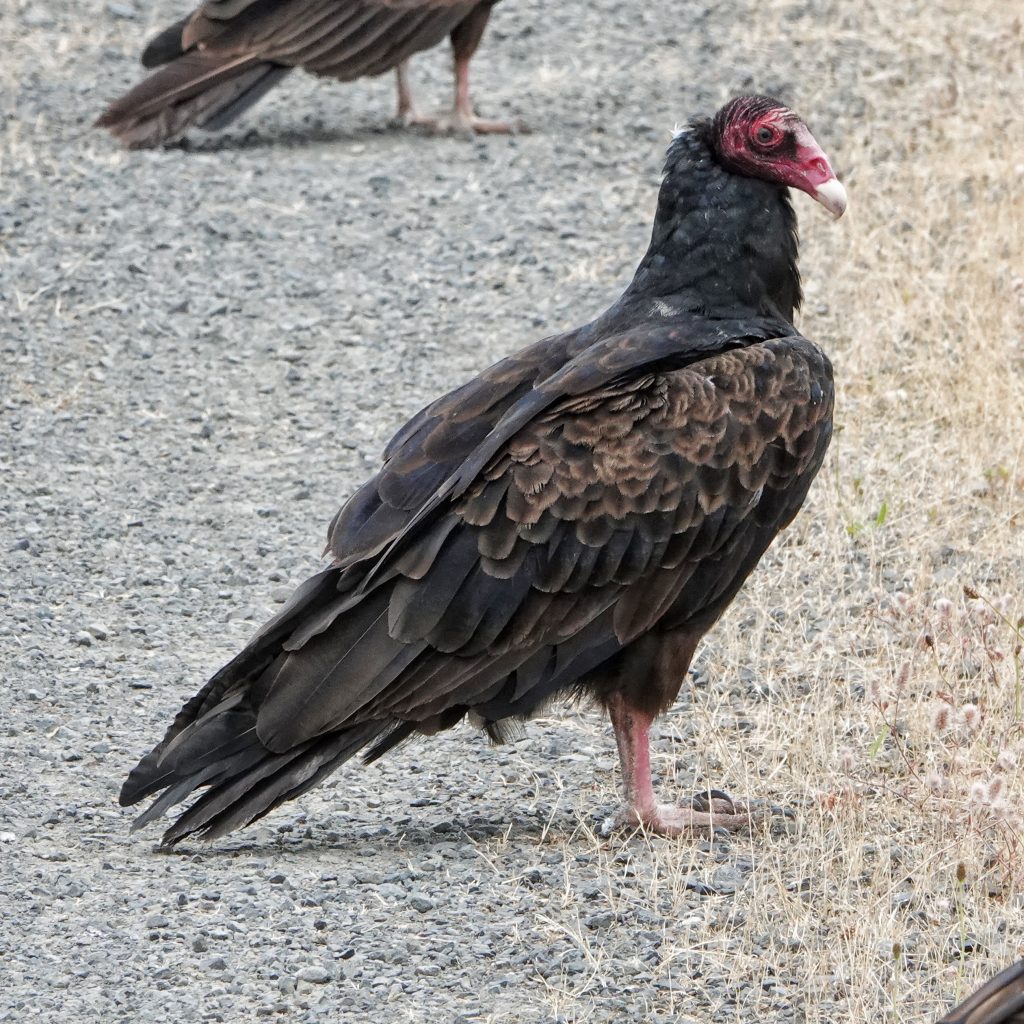
Though we didn’t see this behavior, perched TVs often stand or perch with wings spread in what is called a horaltic pose. This helps them to thermoregulate and to dry their feathers, and also exposes bacteria to UV rays and dry air to cut down on their numbers. Turkey Vultures are not agile in flight, and prefer to ride thermals rather than flap their way around. They often roost in large groups on structures that will support their weight, like dead trees or open conifers, but since they lack a syrinx (the vocal apparatus of birds) those are not noisy congregations, punctuated at most by hisses and grunts. When roosting Turkey Vultures can lower their body temperature by up to 11⁰, from 104⁰ to 93⁰.
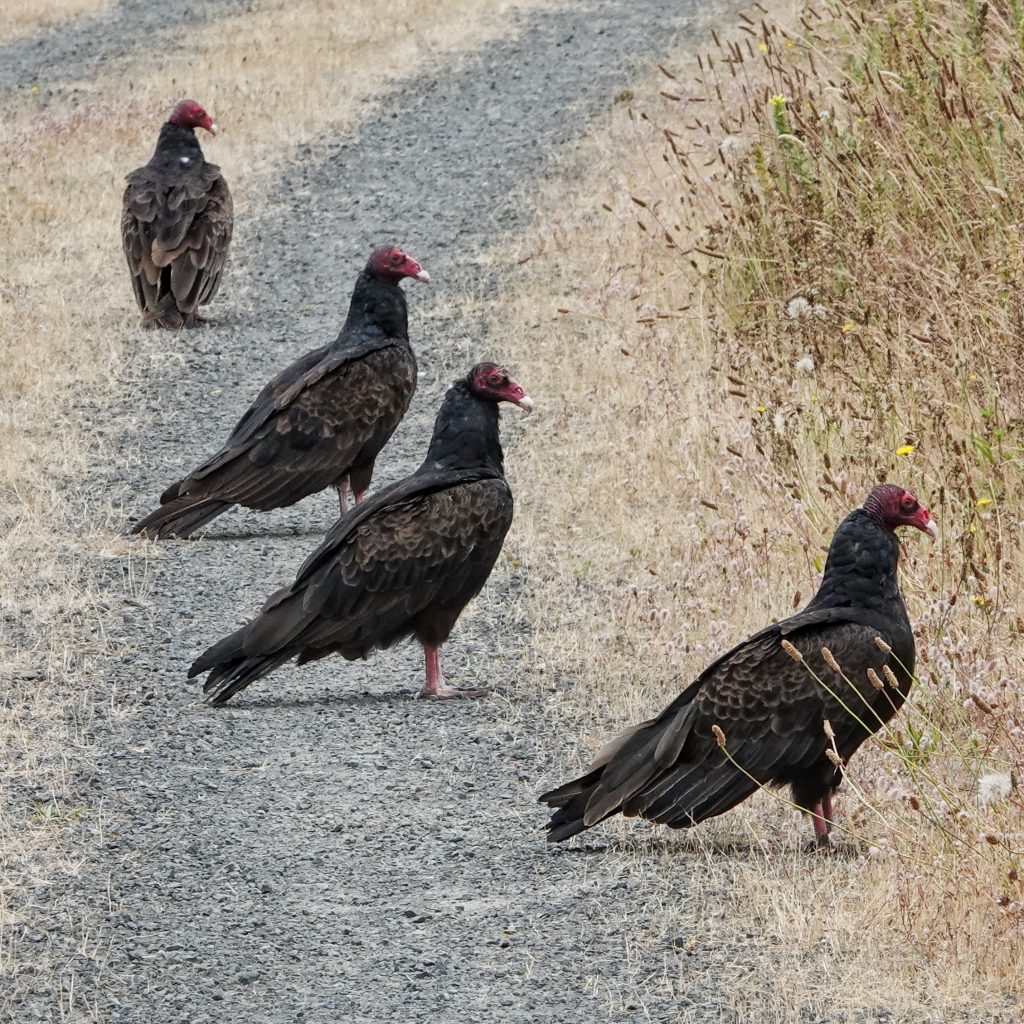
These are not aggressive birds, and their primary defense involves projectile vomiting (up to 10 feet!) on would be predators. Besides the yuck factor and foul smell, there is a tremendous amount of hydrochloric acid in Turkey Vulture puke, because they need it to kill the bacteria they ingest, and getting it into sensitive areas of potential predators or nest raiders usually drives them away. They also often have to vomit the ballast of what’s in their crop when trying to fly if they are threatened during feeding. And, as long as we’re talking about intestinal projection, when overheated they are known to defecate on their feet and legs, where the evaporation of moisture cools them, a process known as urohidrosis. The leftover acids in their guano also kill some bacteria.
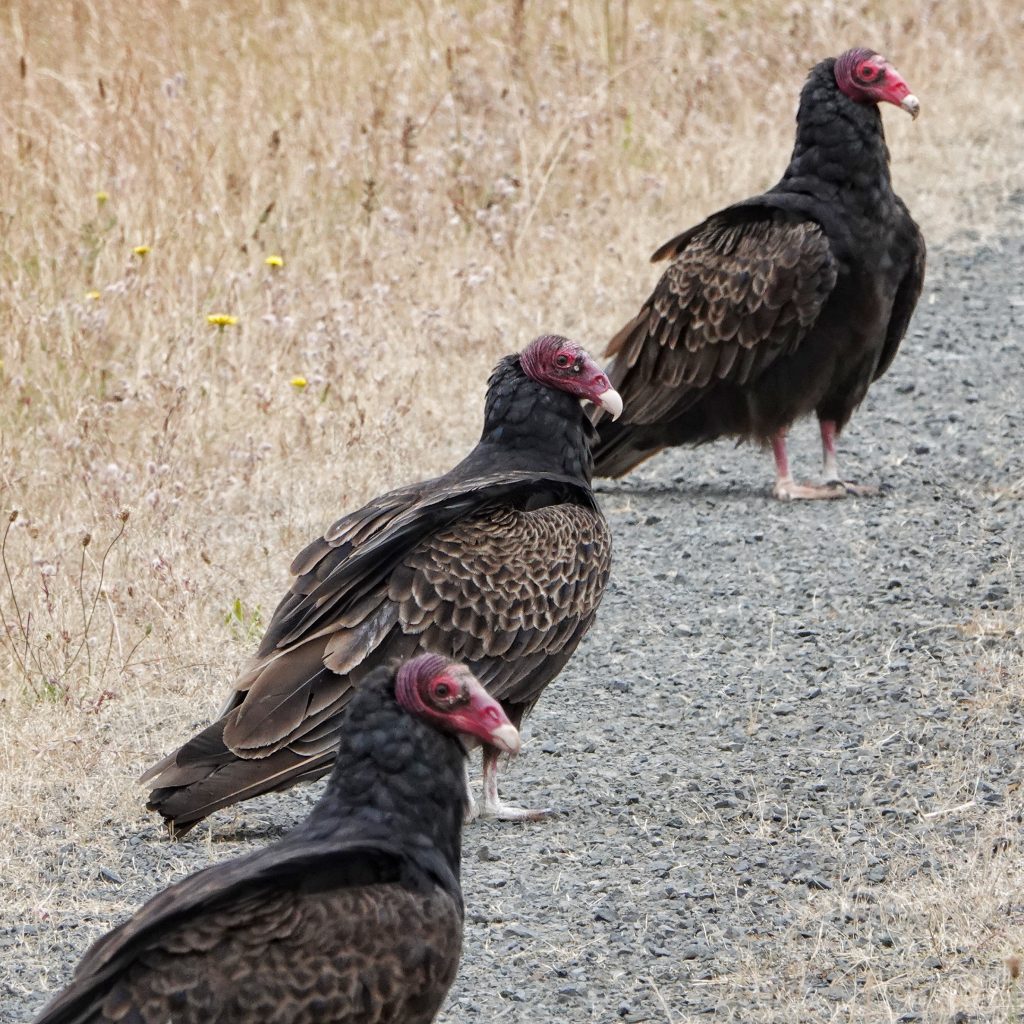
Turkey Vultures may be year around residents in warmer climes, but these birds can also be long distance migrators, and our summertime visitors in the subspecies meridionalis have the longest migration of all Turkey Vultures, which may range all of the way to South America during our winter. They appear to be expanding their summer range northward, and are now often found well north of the Canadian border. I can find no confirmation of this, but I would suspect that they require warmer environments because the higher temperatures create more thermal updrafts to aid them in their soaring flight. But the expansion of the interstate highway system, with its concommitant increase in available carrion, undoubtedly is a factor.
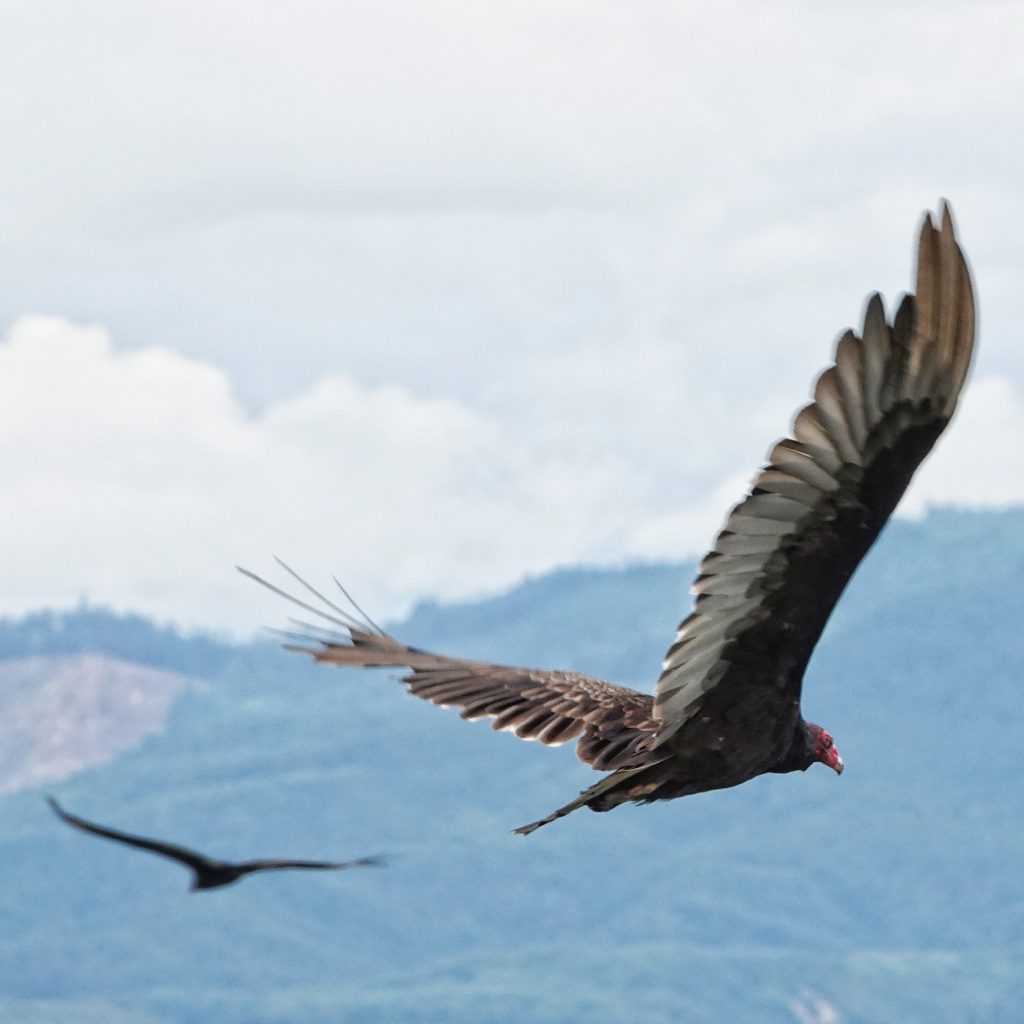
Cathartes aura practice a form of communal mating. From March to June, depending on the weather and location, they will gather in groups on the ground, and hop in circles with wings outspread and flapping slowly. Once they have found a receptive partner both will launch and follow each other closely, continuing to direct wing flaps at each other. Pair bonds usually last only the one season, but multiple year pairings are not unknown.
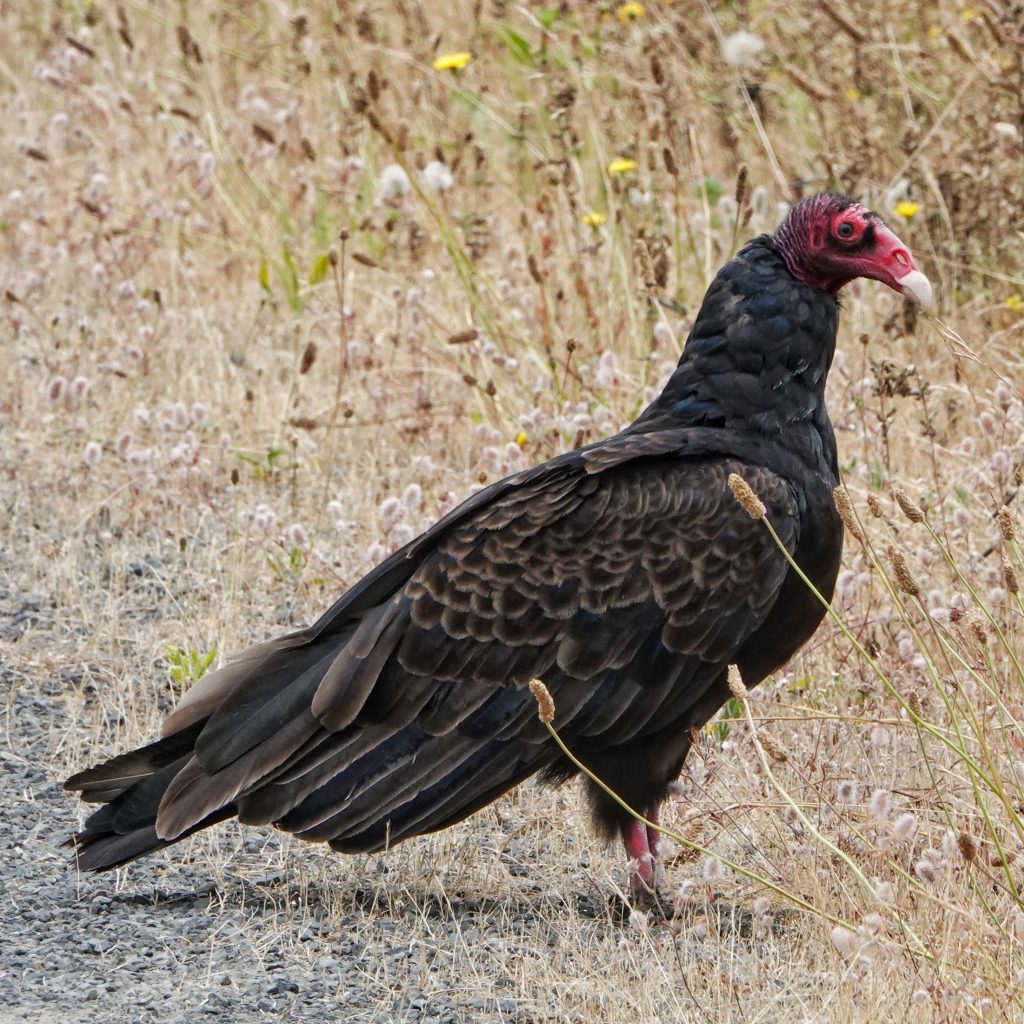
Turkey Vultures have long been known to be in a separate lineage from the Old World Vultures (family Accipitridae, which includes eagles, hawks, and kites), although the wonder of convergent evolution has led to very similar looking birds, but it had been thought that they shared a lineage with the storks. Genetic studies have now shown that they are more appropriately placed in the family Cathartidae, along with the condors. They are now placed in the order Cathartiformes, while the storks are placed in the order Ciconiiformes. At this point in history it is rather unusual to create a whole new order for a clade of vertebrates, and there is still some controversy over its validity, but genetics don’t lie, although they can be misinterpreted.
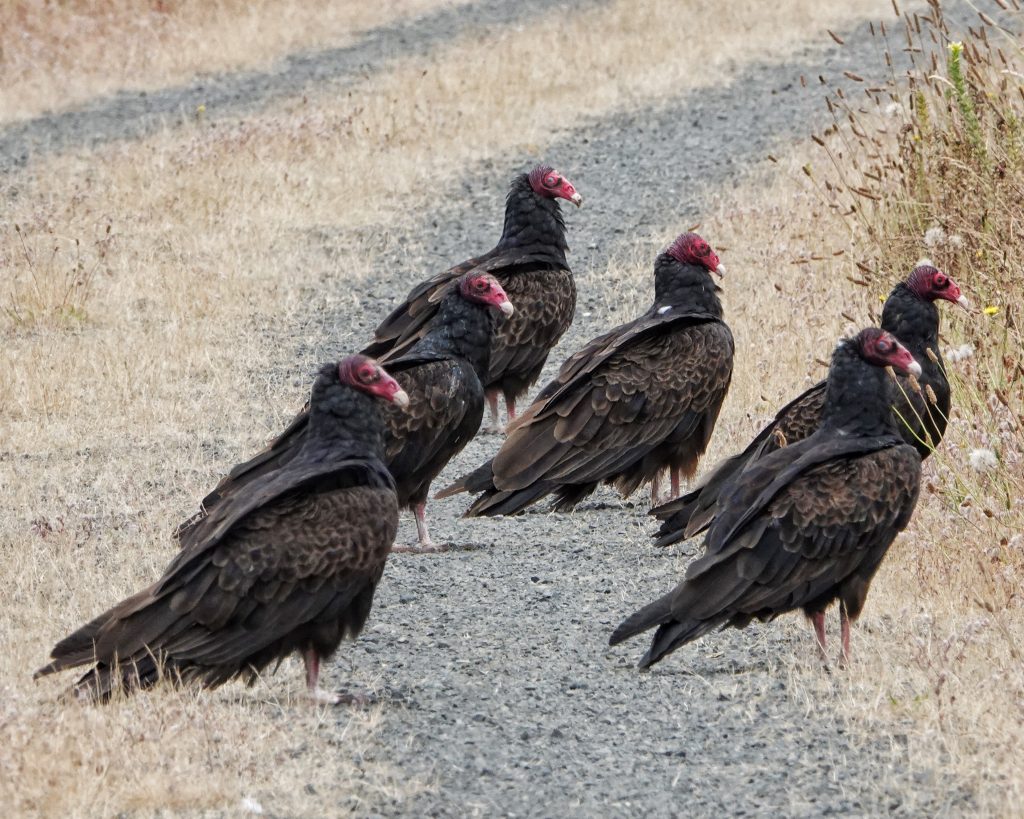
Description-Large (up to 2.5’ tall with 6’ wingspan), mottled brown bird with a featherless red head and an ivory bill; in flight it it’s noticeable that the trailing feathers of the wings are silvery grey, and are split into ‘fingers’ at the wing tips; when soaring it holds its wings cocked in a V.
Similar species– When soaring, other birds do not cock their wings at such an angle (my birding mentors called it the ‘dihedral’); other birds do not have the silver grey trailing wing feathers; Golden Eagles have feathered heads
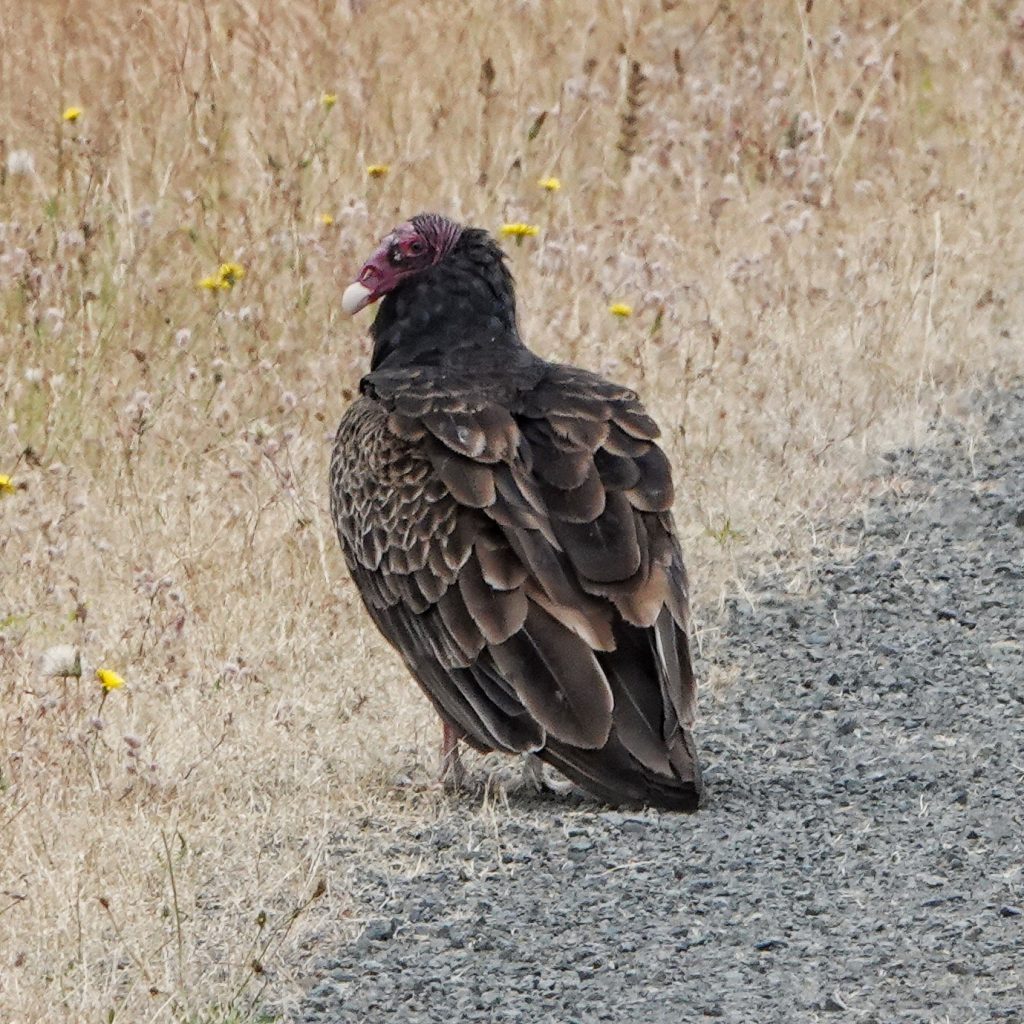
Habitat-Anywhere there is carrion, but most often encountered in open areas and along forest and woodland edges; changes in topography create thermals and updrafts that Turkey Vultures soar on.
Range-Temperate North America, and all of Central and South America; region wide in the PNW in spring, summer, and fall; our ssp. meridionalis is found west of the hundredth meridian.
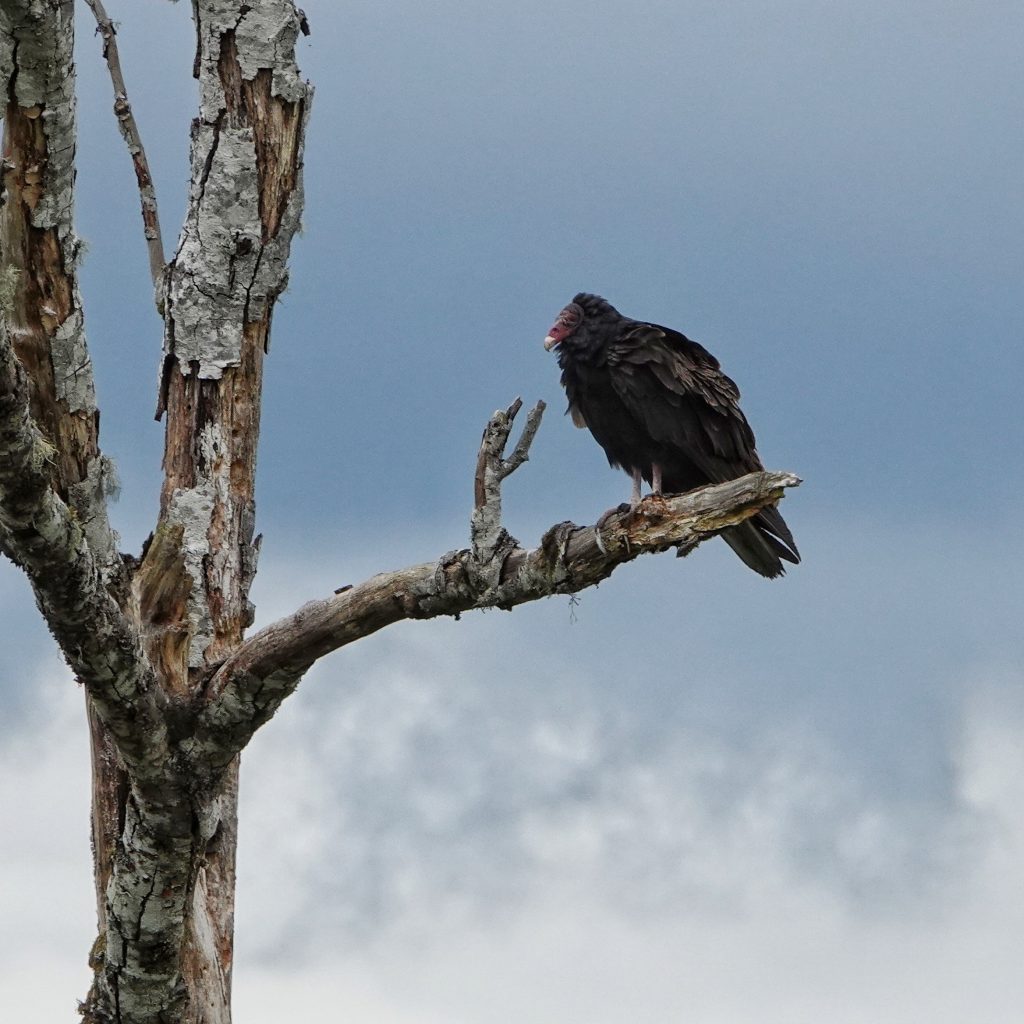
Eats-Carrion; occasionally eats insects and other arthropods when carrion is scarce, and even more rarely will prey upon sick or dying animals.
Eaten by-Adults are seldom preyed upon, and when they are it seems to be from desperation on the part of the predator; eggs and chicks are prey for a wide variety of animals, including Great Horned Owls, Golden and Bald Eagles and other raptors, raccoons, opossum and other climbing mammals.
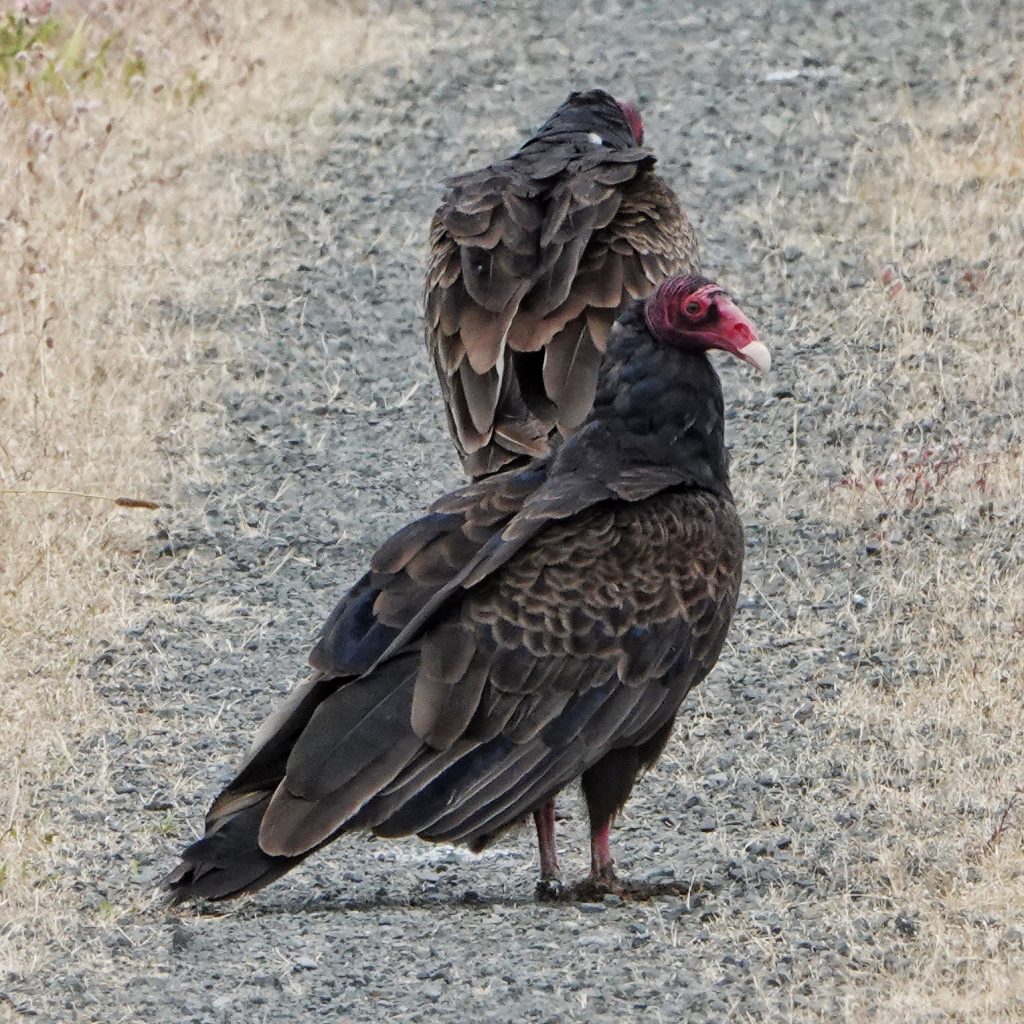
Adults active-Only seen in the PNW from February through October, although often arrive later or leave earlier.
Life cycle-Nests in caves, tree cavities, ledges, and thickets; doesn’t build a nest, 1-3 dull white eggs (sometimes with dark marks) are laid on the substrate; incubation lasts 38-41 days, and both females and males feed the the altricial chicks, which require 70-80 days to fledge; sexual maturity is reached in a year; may live over 20 years in the wild.
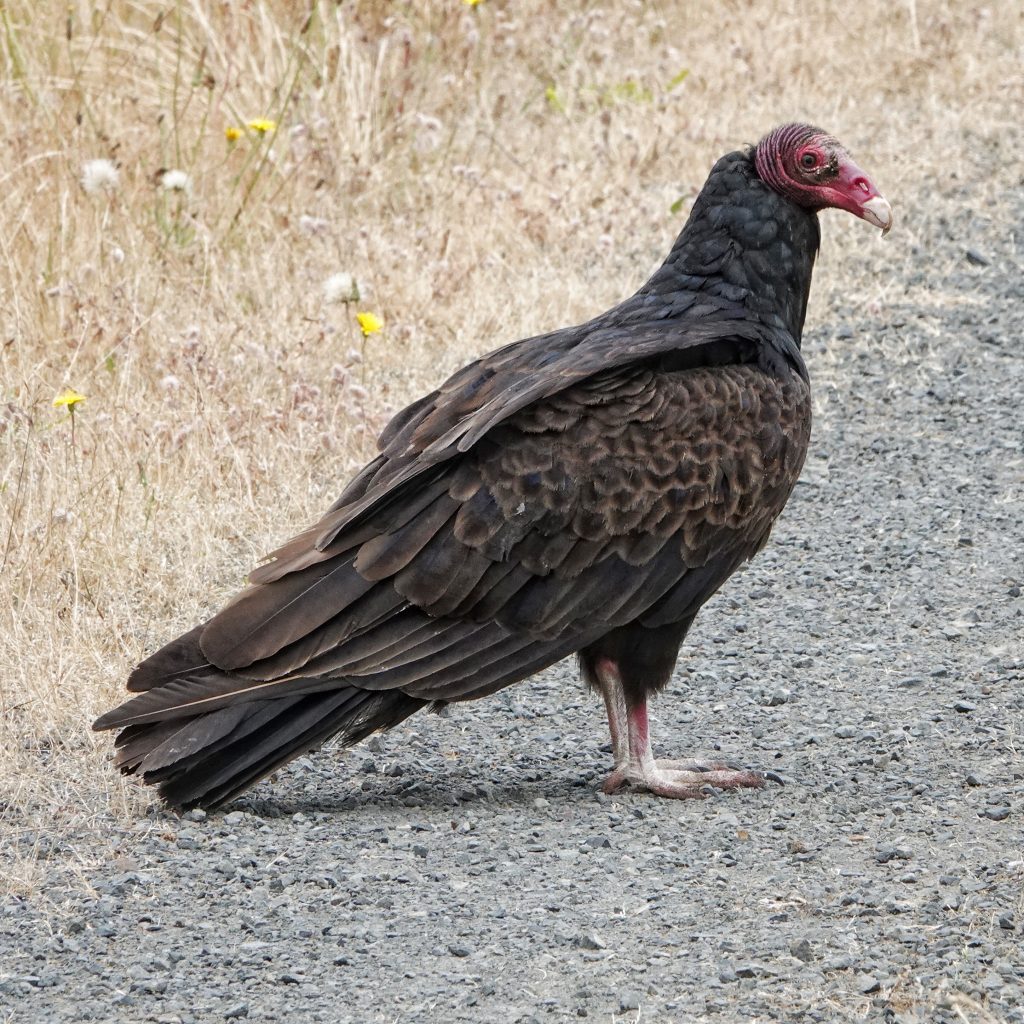
Etymology of names–Cathartes is from the Greek word for ‘cleanser/purifier’ and refers to their role in clearing and transmuting faunal remains. The specific epithet aura may be from the Greek word for ‘breeze’, or the Latin word for ‘golden’. Breeze seems more likely to me, since they both remove the stench of death and glide on the breeze, but Linnaeus didn’t bother to explain himself. The common name vulture is from the Latin word ‘to pluck or tear’. The Turkey reference has to do with the similarity to a turkey’s red, featherless head, although most vultures have featherless heads.
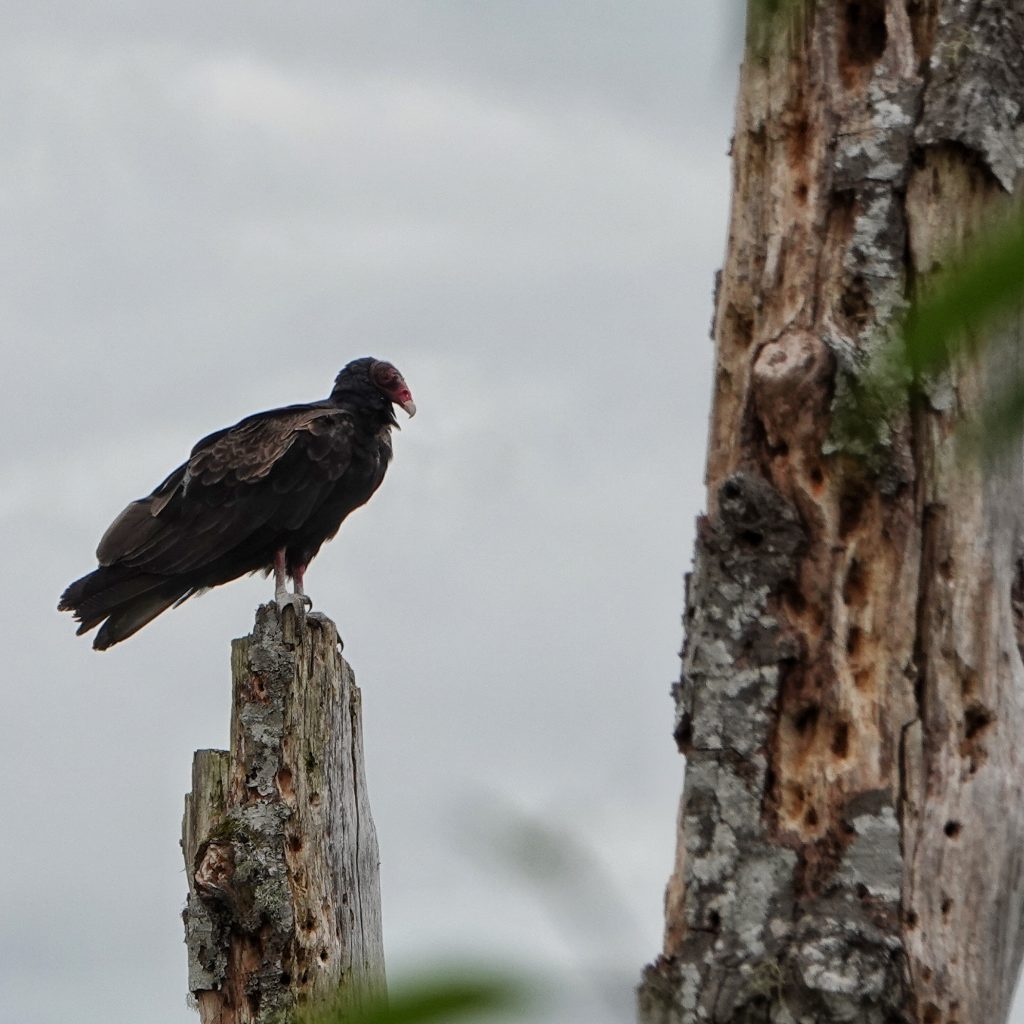
https://www.allaboutbirds.org/guide/Turkey_Vulture/overview
https://animaldiversity.org/accounts/Cathartes_aura/
https://www.audubon.org/field-guide/bird/turkey-vulture
https://www.eptrail.com/2022/03/05/wild-things-turkey-vulture-cathartes-aura/amp/
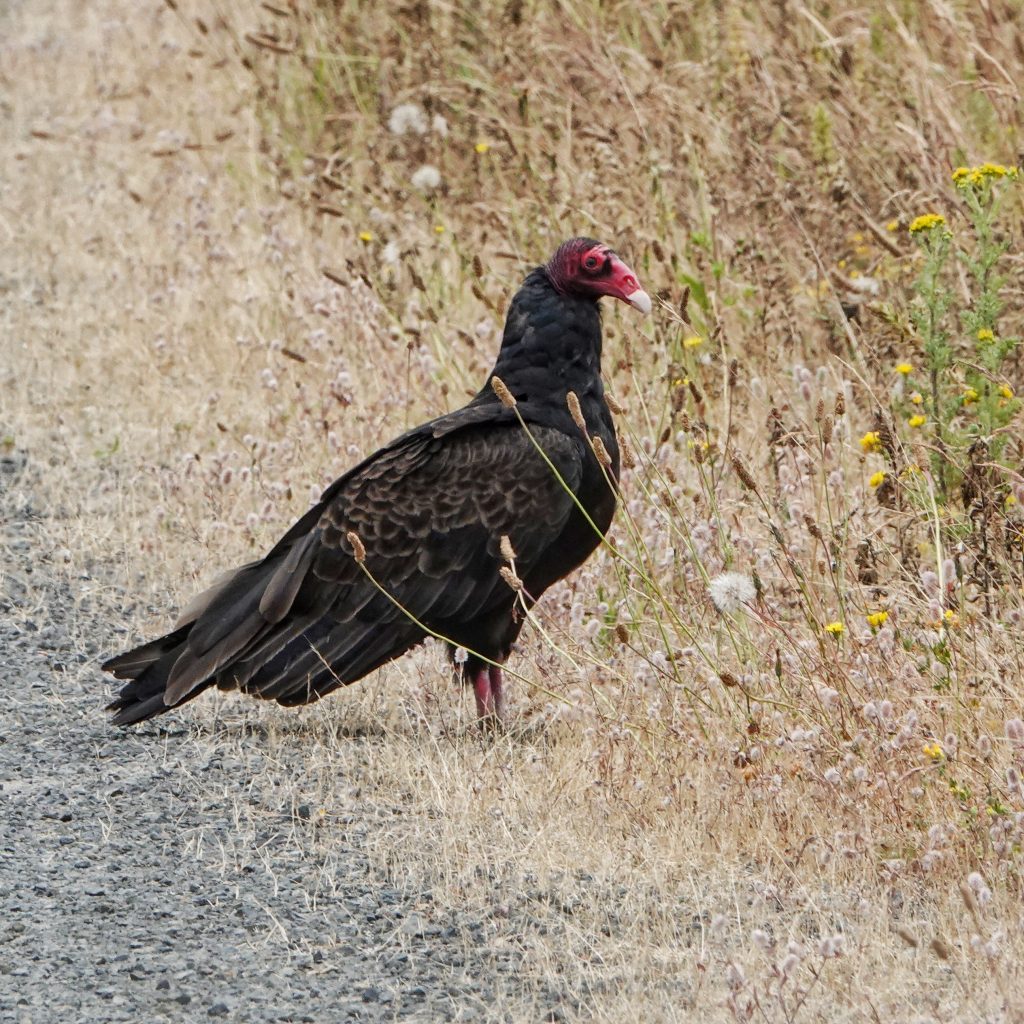
I haven’t left comments before because I’m your very biased dad! But the Turkey Vulture profile with the great pics was so extremely interesting and well written that I had to say it publicly!
Thank you, Dad! Glad to hear you liked it, and found it interesting!
You captured some great shots! Like you, I see turkey vultures with some regularity, but I’ve never been able to see them in detail, up close like this. Thanks!
It was a cool experience, and really nice to be able to share it with people who also think it’s cool!
Projectile vomiting ten feet, only? Pshh I had that beat before I was 7! Very cool species profile, I’m glad I was there to witness it with you!
Yes you did, and I remember it (gag) well! I’m glad you were there too!
I live in Southwest Montana and have observed Vultures summering over the last 4 years. I am not sure that they are Turkey Vultures, because I have seen some clear enough to observe shining black heads
Based on range maps they’d have to be TVs. That red head can look pretty dark at times.
A very nice article about the Turkey Vulture. Will share. Thanks!
Thanks for your appreciation, Deren!